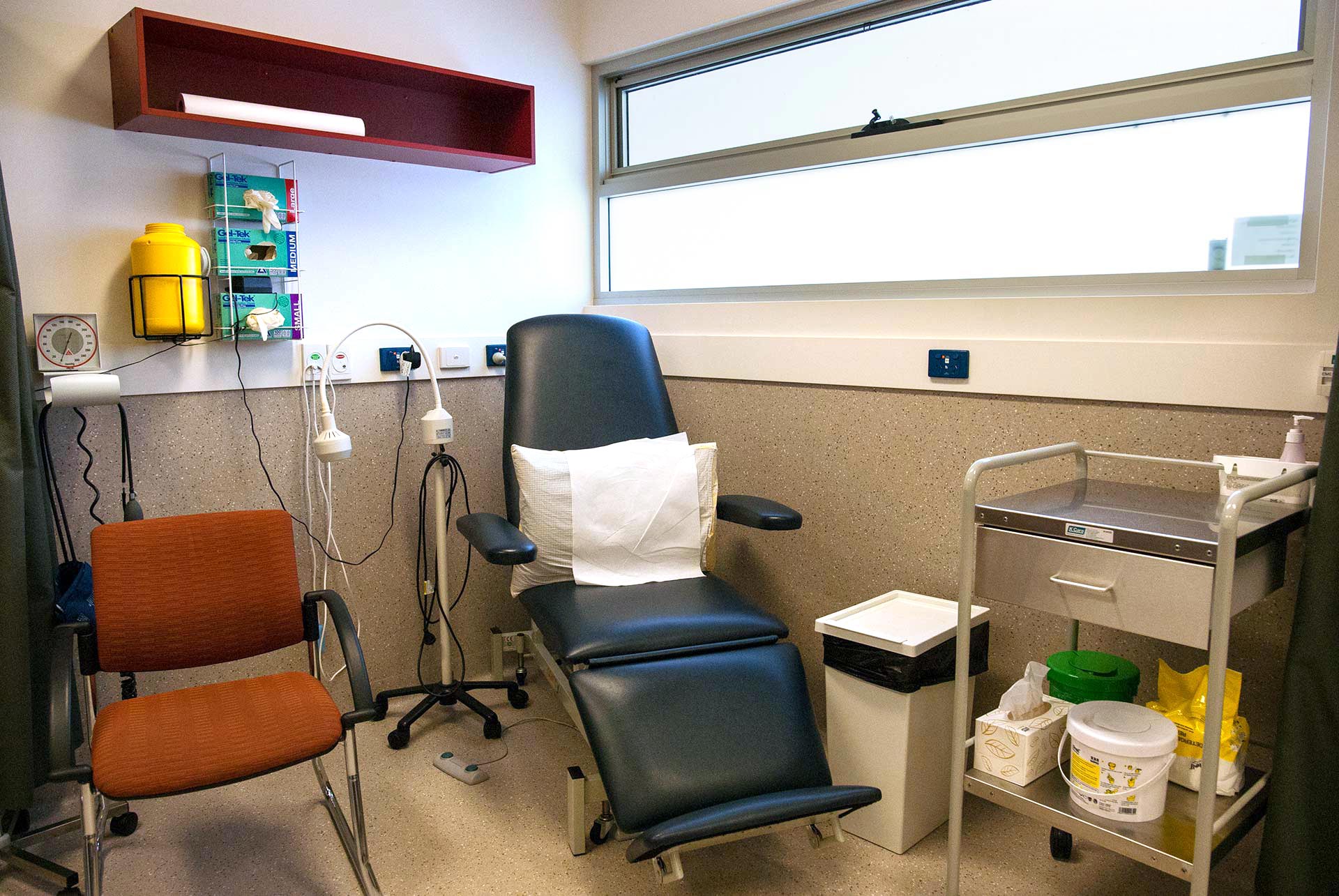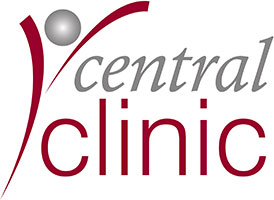Our range of surgical procedures includes:
- Biopsies
- Incisions
- Excisions
- Insertion and Removal of Contraceptive Devices
You can read about these procedures in more detail below. If you have any further questions, please don't hesitate to contact Central Clinic.

Biopsies
What is a biopsy?
Biopsy is a general term which simply means "the removal of tissue for microscopic examination.”
The word biopsy originates from Greek words that mean "to view life." This term describes what a Pathologist, a specialist in identifying diseases, does with tissue obtained from a biopsy.
Biopsy is a very accurate method for analysing unusual growths or other suspicious tissue. Because it provides such accurate diagnostic information, biopsy is an important diagnostic tool in the fight against cancer.
What are the types of biopsies?
- Liver Biopsy
- Endometrial Biopsy
- Prostate Biopsy
- Skin Biopsy
- Bone marrow Biopsy
- Breast Biopsy
- Small intestine Biopsy
Why is biopsy done?
A biopsy is performed to obtain pieces of tissue that are sent to the laboratory for examination of signs of cancer or other diseases. The biopsy sample is stained and examined under a microscope in the lab. This close examination allows the laboratory technician to determine if the sample is normal, part of a non-cancerous or benign tumour, or part of a cancerous or malignant tumour.
The type of cancer may also be identified at this time and can assist in evaluating the risk that the cancer has spread or metastasized to other areas of the body. A biopsy may also be used to identify causes of inflammation and infection.
How is it done?
The preparation for a biopsy will differ based on the type of biopsy procedure being performed. A skin or muscle biopsy usually won’t require any modification of diet. For an open biopsy requiring general anesthesia, you will be instructed to fast several hours before the procedure.
Remind your doctor beforehand about any allergies, history of surgical procedures, and current medications. For women, inform the doctor if there is a possibility that you could be pregnant.
What are the risks?
Needle biopsy is minimally invasive and is typically a very safe procedure. The benefits of percutaneous biopsy often far outweigh the risks. However, as with all invasive procedures, certain risks do exist.
Depending upon the site being biopsied and the type of biopsy being performed, risks can include:
- Haemorrhage: bleeding
- Infection of the biopsy area
- Pooling of blood trapped inside the biopsy area
Surgical biopsy has some additional risks versus needle biopsy:
- Surgical biopsies require sutures (stitches) and can leave a disfiguring scar, depending on the size of the excision.
- Surgical biopsy has a small risk of bleeding, infection, or wound healing problems.
- Surgical biopsy usually requires one day of recuperation at home.
Incisions
Incision and Drainage of Abscess
Abscesses (boils) are skin infections that are inflamed and contain pus. Incision and drainage is a procedure performed to clear large, growing and painful abscesses of pus. The procedure is performed under local anesthesia and takes about 45 minutes. Your doctor makes a small incision and drains the pus using a catheter (thin long tube), syringe or just by squeezing the abscess. The area is flushed with sterile water. Your doctor may use special tools to explore further into the incision. A sample of the infected region is removed with a cotton swab for testing in the laboratory. Your doctor may pack the wound with gauze and cover with a dressing to prevent the recurrence of the abscess. Your wound will recover in about 14 days. As with all surgeries, incision and drainage of an abscess may be associated with complications such as pain, bleeding, redness, swelling, fever, rash and scarring at the site of the abscess.
Excisions
Cyst Excision
Cysts are sac-like structures that contain fluid or semi-solid material. Sebaceous cysts are common benign (non-cancerous) growths on the skin that develop on the face, neck and trunk regions. Most are harmless, but you may choose to remove a cyst if it causes pain or for cosmetic reasons. Cyst excision is a simple and quick procedure.
The removal of a skin cyst is performed under local anesthesia. Aseptic precautions are taken to prevent infection. Your doctor makes a superficial incision over the cyst, but care is taken not to rupture it during the procedure. Forceps are used to hold the skin. The cyst is isolated by cutting the attached tissue to mobilize and remove it. Your doctor may suture the skin if the cyst is large and would leave a significant blemish. The removed cyst is sent to the laboratory for examination. As with all surgical procedures, cyst excision may be associated with certain complications, which include bleeding, infection, nerve damage, scarring, pain, inflammation and possible regrowth.
Insertion and Removal of Contraceptives
Contraception, also known as birth control, is the practice of preventing pregnancy. Numerous contraceptive methods are available including barrier or hormonal method, natural family planning and sterilization (surgery). Two hormonal methods of contraception used by women include the Implanon and Mirena which steadily release the hormone progestin. Progestin prevents ovulation, thins the womb lining and thickens the cervical mucus, preventing sperm from reaching the egg for fertilisation.
Insertion and removal of Implanon: Implanon is a hormone implant inserted under your skin in your upper arm. It is a plastic rod which is about the size of a matchstick. Insertion of Implanon is usually performed on an outpatient basis under local anaesthesia. Your doctor inserts the Implanon in a groove between the biceps and triceps muscles with the help of an applicator. A small bandage and pressure bandage are applied. Insertion of Implanon may be associated with certain risks such as pain, scarring, bleeding and bruising at the insertion site.
The Implanon implant prevents pregnancy for up to a period of three years, and should be replaced for further protection. Removal is performed under local anaesthesia. Your doctor makes a small incision on the skin and pushes the Implanon towards the incision until the tip becomes visible. It is grasped with forceps and pulled out. The incision is then closed and a pressure bandage is applied to lessen bruising.
Insertion and removal of Mirena: Mirena intrauterine device (IUD) is a small T-shaped plastic frame that is inserted vaginally into the uterus for long-term birth control. The insertion of Mirena is performed in the doctor’s office. Your doctor first cleans the cervix and vagina with an antiseptic solution. Using a special instrument, the cervical canal and the uterine cavity is aligned, and the depth of the uterine cavity is measured with the help of another tool. The Mirena is placed inside an applicator tube with its horizontal arms folded. The applicator is placed into your cervical canal and the Mirena is opened up in your uterus. Your doctor then trims the Mirena’s strings so that it does not extend out of the vagina.
Mirena can provide protection for up to five years, and needs to be replaced for further contraception. Removal of the Mirena is done with the help of forceps. Your doctor holds the string and gently pulls it out. You may experience light bleeding and cramping during the process.

